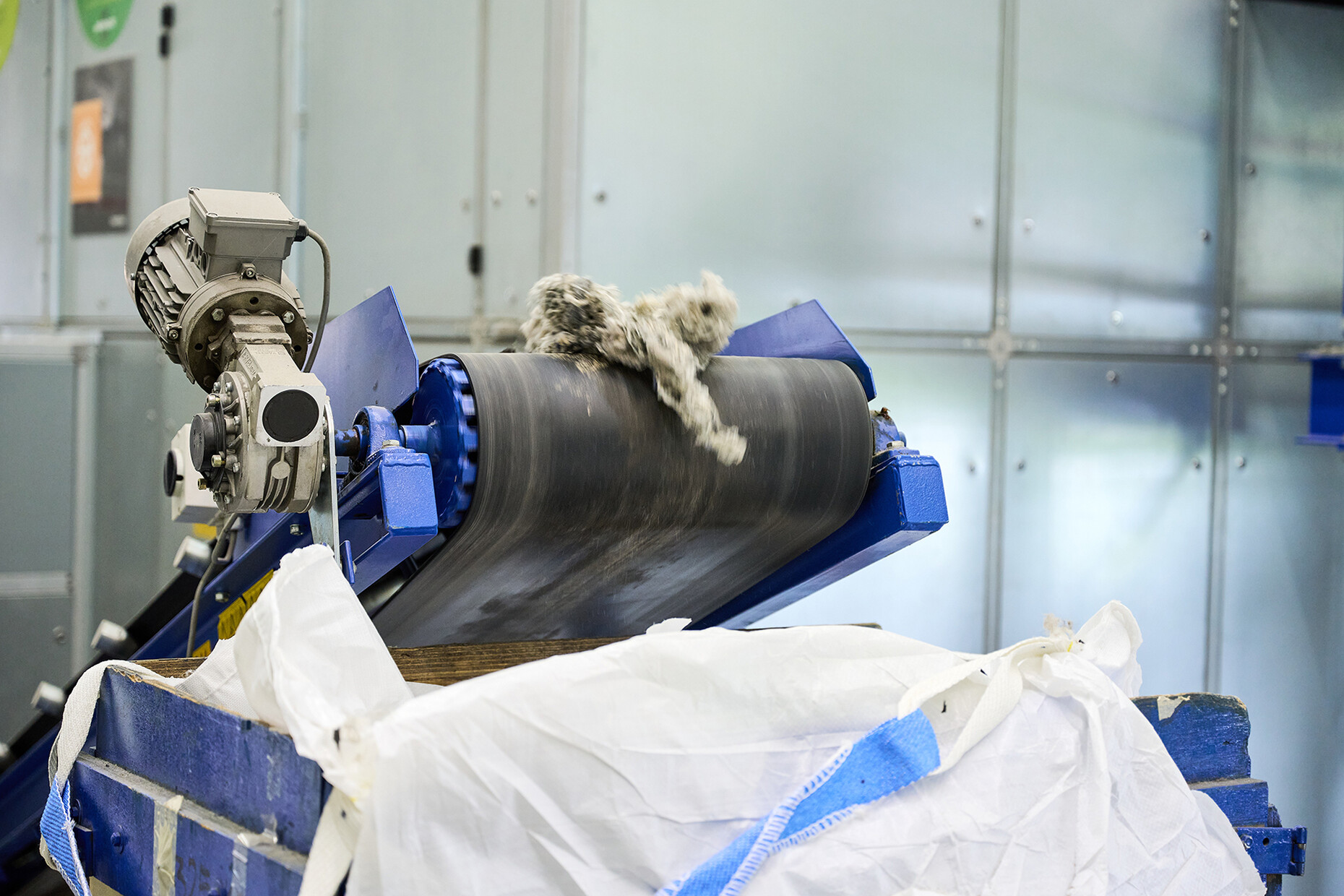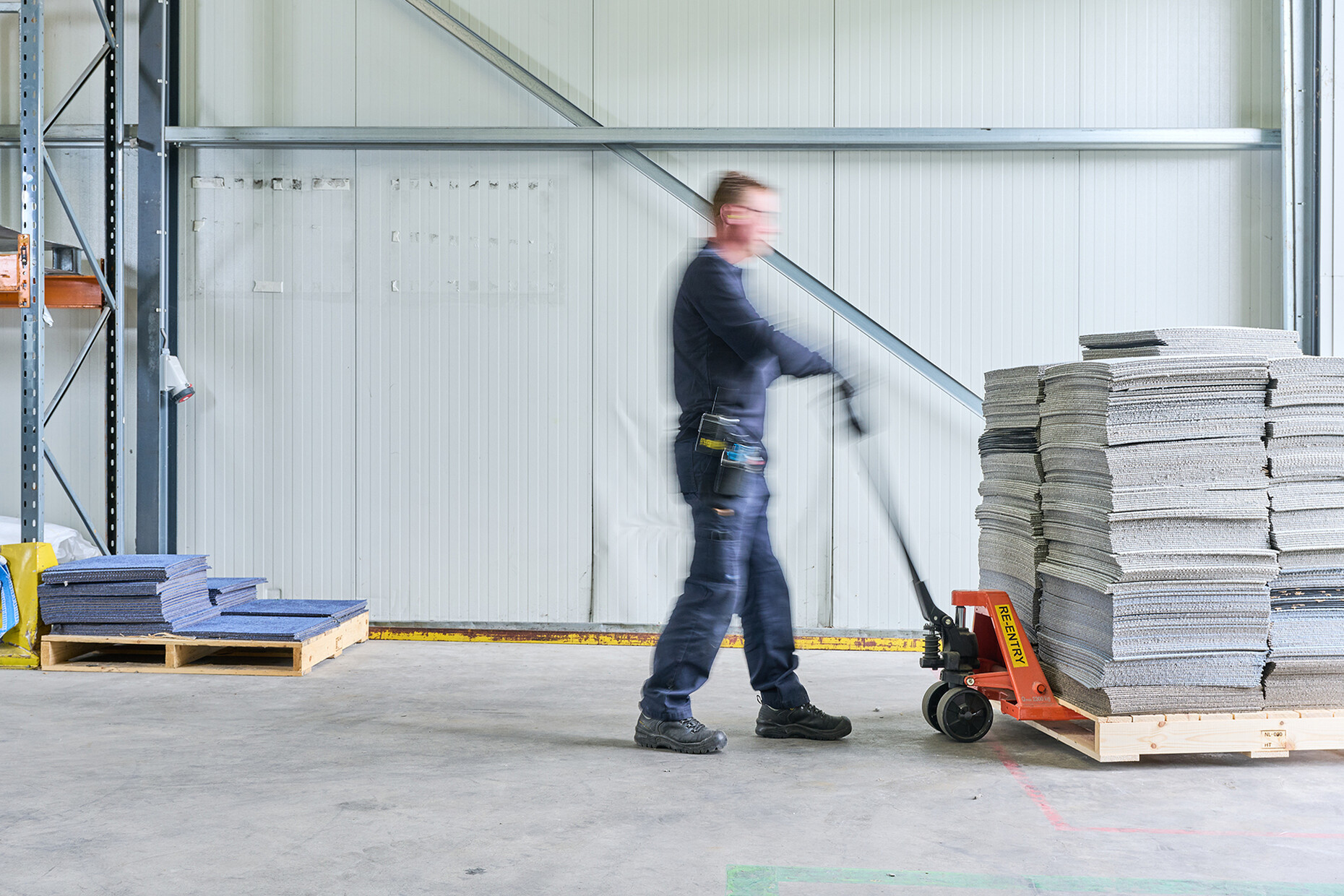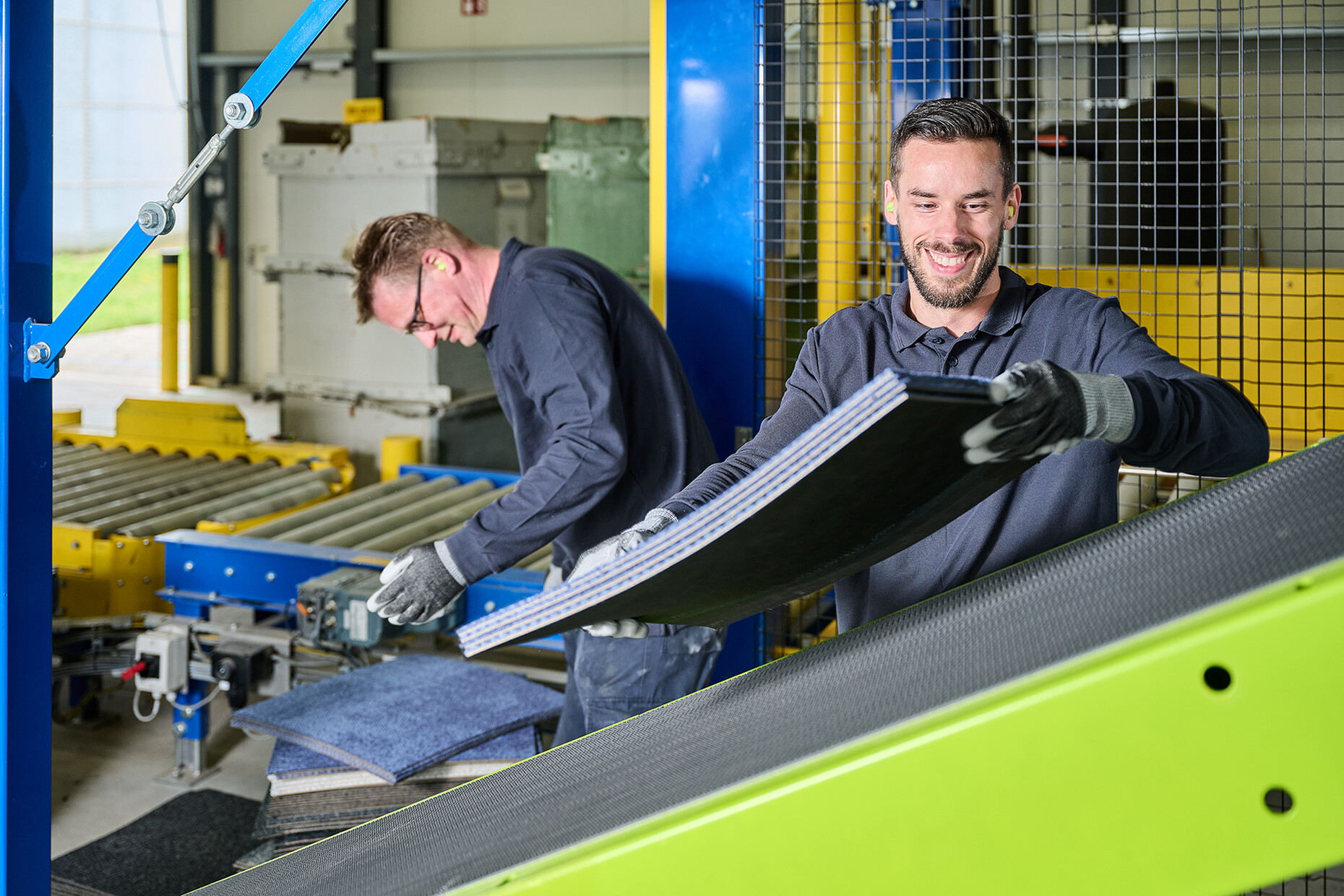Progress for the circular economy
One of the simplest ideas of environmentally friendly production is not so trivial in practice: the reduction of waste and the reuse of valuable materials. As a globally operating company for flooring solutions, Interface launched its take-back programme back in 1995. Since then, the aim of ReEntry has been to recycle used carpet tiles from the company itself. The approach is particularly clever, as the processes at the end of the product life cycle are already considered during production and all components are known. The textile floor coverings are also particularly durable and contain hardly any elements that cannot be recycled. Since the Paris Climate Agreement in 2016, Interface has taken back around 32,000 tonnes of used carpet tiles. Depending on the condition and composition, an individual decision is made as to which type of recycling from Interface's ReEntry programme makes sense. The first choice is reuse: "ReUse, that is the direct reuse of used carpet tiles by local partners, charitable organisations or social institutions, is the top priority and the most important part of ReEntry," emphasises Liz Minné, Head of Global Sustainability Strategy. The company has recently invested in the second option, namely in the recycling process: Minné announces that the efficiency of the recovery processes at the European production facility in Scherpenzeel has been drastically increased:
”The expansion of recycling capacities at the site in the Netherlands represents a significant milestone for us, as we want to close the circle and further reduce the carbon footprint of our products.“
A machine uses an advanced process for recycling post-consumer products. Carpet tiles with the CQuestBio backing, that cannot be recycled in the ReUse programme, are recycled here. The yarn and backing are separated from each other and the different elements can be used directly to produce new carpet tiles or technical plastics. The Interface carpet tiles produced in Europe already consist of over 88 per cent recycled or bio-based materials - and therefore also make a contribution to sustainable construction in the balance sheets of their customers.







